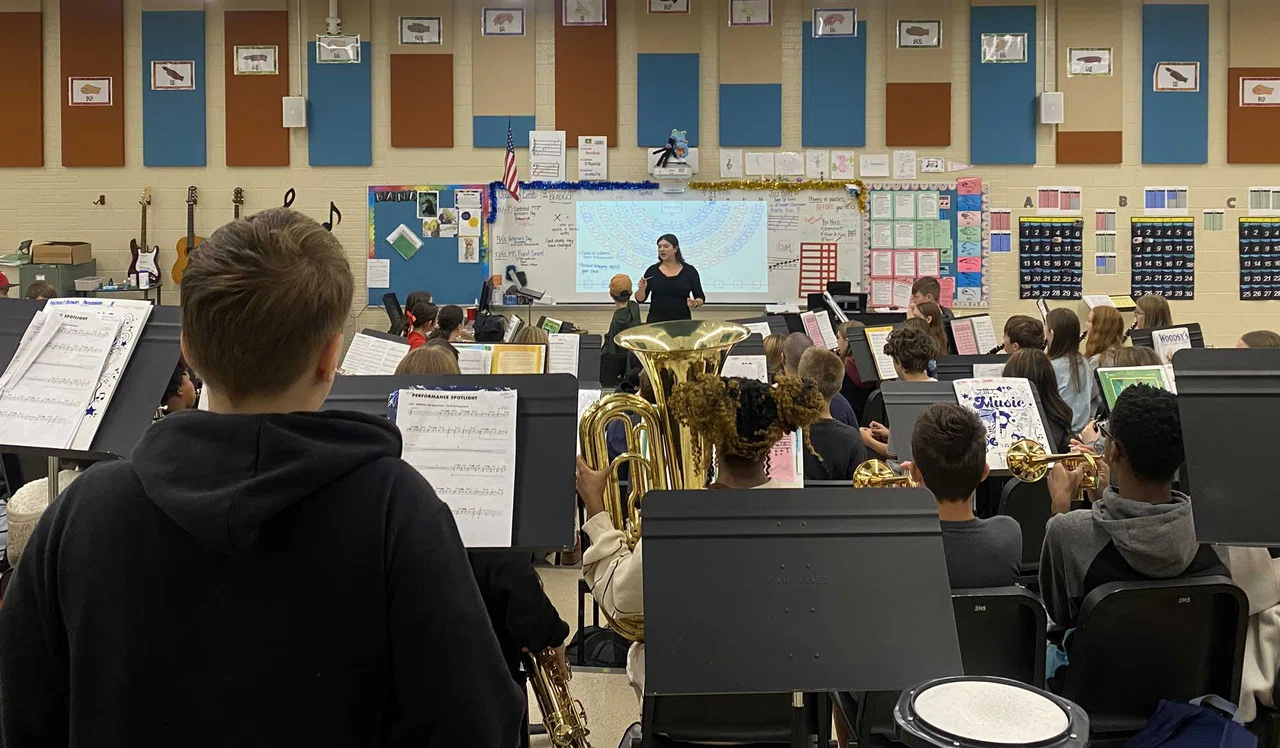©2025 Ohio Music Education Association



FEATURED ARTICLES
Conducting the Classroom:
Classroom Management Insights from Student Teachers
Conducting the Classroom:
Classroom Management Insights from Student Teachers
Michael Alsop


Michael Alsop,
University of Louisville
Classroom management remains one of the most daunting challenges for new teachers, and student teaching often provides the first taste of its unpredictable nature. While coursework in teacher preparation programs emphasizes structure, planning, and professionalism, nothing quite compares to the first time a student teacher stands in front of a class alone and realizes that all the planning in the world cannot stop a class from unraveling. At the University of Louisville, undergraduate music education students complete weekly reflections during student teaching, offering honest and revealing insights into what works for classroom management, what doesn’t, and what they wish they had known sooner. This article draws from the reflections of eighteen student teachers across three semesters to present recurring themes and practical takeaways for managing real-world music classrooms.
What Doesn’t Work
What Doesn’t Work
Several common missteps have emerged from student reflections, particularly around consistency and authority. Many student teachers have admitted that when they failed to enforce expectations uniformly, students quickly noticed—and exploited—the inconsistency. As one student teacher put it, “You MUST have clear expectations and procedures (that are enforced the same, all the time)...” Another noted, “Students will do whatever you let them do.”
Exceptions can also become a slippery slope. Good intentions often lead to unintentional perceptions of unfairness. One student wrote, “There should never be exceptions to classroom rules for consistency and fairness reasons.” Talking over students is another frequently cited misstep. Trying to regain control by speaking louder only compounds the chaos. Instead, student teachers learned the value of silence and waiting. One reflection advised: “Refuse to give any instruction if students are talking over you. If they are not focused... it will simply waste time.”
Finally, several student teachers reflected on moments when they delayed addressing small disruptions, only to have the behavior escalate. One wrote, “You may need to tell the same student to stop talking. You may need to move students... Some students just want attention.” The collective lesson: redirect early, and do so calmly but clearly.
What Does Work
What Does Work
In contrast, many student teachers have shared techniques and strategies that proved effective in managing behavior and building classroom culture. In elementary placements, success often came from clear preparation and routine. “It is important to go over expectations before the activity/instruments are passed out,” one student wrote. Reinforcing expectations before transitions helped prevent behavior problems later.
Student teachers also discovered that consistency could coexist with flexibility. One wrote, “Some students get one warning and then have to go sit out and calm down; some get multiple because if they don’t, the whole class will be derailed.” This reflects a growing awareness of differentiated management approaches based on student need. Strategic movement and seating also played a role. Moving students away from distractions—even those who weren’t the source of disruption—was often more effective than verbal redirection alone.
In secondary settings, pacing emerged as a key factor. Student teachers learned that a brisk, purposeful lesson reduced downtime and minimized opportunities for misbehavior. As one student observed, “A fast-paced learning environment helps students stay on task and decreases the risk of distractions.” Assigning every student a role also helped maintain focus. One student teacher recalled how her cooperating teacher “made sure to give those students tasks to do while the others practiced.”
Positive reinforcement strategies like sound buttons, sticker systems, or celebratory shout-outs helped build rapport. These tools weren’t gimmicks—they were relationship builders. Finally, a whole-child mindset was key to long-term success. Student teachers who connected with students beyond music class found that those relationships translated to better behavior and engagement. One wrote, “Have your students’ backs and communicate with other teachers in the building to have a whole-child mindset.”
What Surprised Them
Some of the most meaningful lessons have come not from planned strategies, but from moments of surprise. Many student teachers were caught off guard by how challenging the day after a break or a field trip could be. One wrote, “Keeping class moving on Fridays was the biggest challenge... but maintaining teacher voice made a difference.” Others were shocked by how a single disruptive student could derail an otherwise well-planned lesson.
Several reflected on the difficulty of building authority when students viewed them differently from their cooperating teachers. One shared, “Students were respectful for my CT, but when I taught, they refused to participate—even when I used the same techniques.” Still others grappled with how to be assertive without feeling “mean.” The tension between authority and approachability was real. One reflection read, “How can I implement/enforce classroom procedures without being ‘mean’ and while also connecting to students on a personal level?”
Takeaways for Future Student Teachers
Taken together, these reflections offer powerful insight for those about to enter student teaching or the first year of music instruction. Here are five takeaways that appeared consistently across the reflections:
- Be consistent, but not rigid. Enforce rules fairly and predictably, but remain aware of individual student needs.
- Teach behavior like you teach music. Model, rehearse, and reinforce expected behaviors repeatedly.
- Build relationships every day. Students respond better to teachers who know them and care about them.
- Don’t take disruptions personally. Student behavior often reflects what they’re experiencing, not who you are as a teacher.
- Practice reflective teaching. Take time to write about what worked, what didn’t, and what you would do differently next time.

Dr. Michael Alsop is Assistant Professor and Coordinator of Music Education at the University of Louisville, where he teaches undergraduate and graduate courses and oversees practicum and student teaching placements. He completed his PhD in Music Education at the University of Georgia and earned prior degrees from the University of Louisville (M.M.E.) and DePauw University (B.M.E.). A former middle school band director, he has also worked extensively with marching bands and drum corps across the country.




